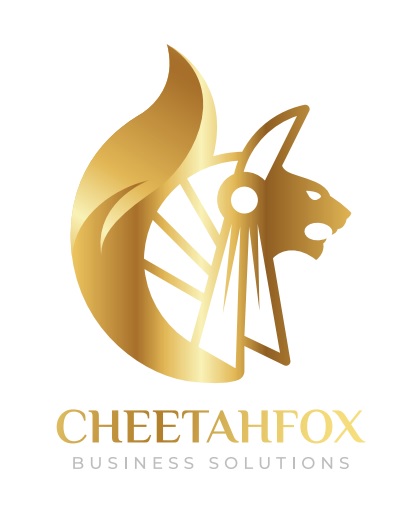ERP Systems Investigation overview

We can summarize briefly the reasons as follows:

There are competing measurement approaches and concepts coming from research literature and practice Some factors that can be encountered in the literature.

(1) User satisfaction
(2) It ended businessperformance
(3) Within budget
(4) System acceptance and usage
(5) Predetermined corporate goals
(6) PHASES OF ERP INTRODUCTION
The reason why a decision may have been made to replace an operational system by an ERP solution can be concluded from several basic causes.
The companies frequently encounter a decision situation how they can modernize existing data processing system. There are three different ways: development, package procurement and renting or leasing the ERP services.
At the beginning, it is difficult to decide whether a program package should be procured or a vendor should be found to develop a customized solution and who can adapt its basic system to the company’s requirement. The decision is hard, as the package, solution cannot cover all business processes at the enterprise. A
Developed system may comply with requirements and it can be tailor made for specific business processes; however, it requires more resources.
Before the decision between the package solution and development, an analysis should be carried out on potential solutions then after the analysis, a management decision could be made.
The third opportunity is renting or paying a fee for all or some services of an ERP system. Most recently, the ASP (Application Service Providing) is an appropriate, cost-effective solution for micro and small enterprises. The software as a service can be accessed through the Cloud Computing.
The question emerges whether what the factors are that lead companies to consider replacing the operational legacy system fully or partially with a new information system.
their are some justification depend on the grounds of the underdeveloped, legacy information processing system:
(1) The rapidly developing enterprise owned old, legacy information processing system that did not cover all business processes. For this reason, the introduction and implementation of a more modern enterprise management system became the must.
(2) In the region, the other, concurrent companies have adopted and will have implemented various management systems gaining competitive advantage.
(3) There is intention to develop and to extend the retail branch of the enterprise. For this reason, the new information system should have a steady and reliable on-line connection between the retail shops and the wholesale units.
A company from Saudi Arabia had an AS/400 based system, The subsidiary of a multinational Toyota company in Saudi Arabia used to employ ERP system. The company has roughly 55 subsidiaries Saudi Cities and they had applied a wide variety of ERP systems. The company decided to eliminate the heterogeneity of systems. The enterprises wanted one integrated solution. Considering the opportunities, the top management of multinational company made the decision for a project called Oracle E-Business Suite .and had operated for 20 years. The question “Whether does the company need a new information system and if the answer yes then why?” has been responded as it follows:
(1)The new system is pre-condition to realize the business strategy plan.
(2) The new ERP System provides higher reliability and service level for customers.
(3) Within the business group, the objective is to increase efficiency and to make more transparent the business processes.
(4) The system should support the business planning and consequently the cost- efficiency and serving the consumers.
(5) The new IS creates the opportunity for an integrated system.
The difficulties in selection of ERP system did not originate from the fact that too few ERP systems is available on market, in spite of it there are multitude of ERP systems. There are hundred vendors beside the major players in Germany. The primary vendor selection could be based on the market position within the specific ERP sector.
The investigation of potential ERP solution should take into account business and financial consideration beside the information technology viewpoints (e.g. software and programming environment, information system function etc.). Toyota Saudi had as selection goals for ERP the following criteria:
(1) The system supplier should be a domestic vendor, the vendor should commit itself for satisfying the users’ request for change.
(2) User friendly system, easy handling of user interface and ability for customization.
(3) Capability for integration and interoperation with other systems.
(4) The IT stability of ERP System should be high.
Besides the service quality and financial criteria, there are lots of other objectives that should be taken into account during the selection process. The compliance to the requirements of the company is one of the most important criteria. To clarify and to define accurately the compliance criteria, a business process modeling exercise should be carried out to discover and to map the whole business process that will be involved in the ERP introduction. To explore the discrepancies between the existing processes and the processes of potential ERP systems, a gap analysis should be performed. T
The new ERP system may fulfill the recent requirements; however the ERP system should be prepared for future demands .
The stability of information systems means the adaptability to changes of technology, business processes and business environment.
The experiences show that if the set of functions to be automated is minimized for several reasons – financial, compliance, project timing, resources etc.
Then later on, the enhancement and evolutionary development to react to the changing environment
May cause extra costs and other operational difficulties as against of maximization of set of functions for automation.The flexibility of ERP systems is a success criterion within the corporate and SME world. In this context, the flexibility is an overarching concept that involves the simultaneous use of various languages carrying out even the same task, at the same time, furthermore adaptation to the changing business and market environment.
The top management at the center of enterprises has various opportunities to find a satisfactory solution among the potential ERP systems. The concrete implementation is situated in the centralization-decentralization continuum – both horizontally and vertically to provide the support that is required the top management of enterprises.
Other uncertainty factor is the structure of business processes and organization and the capability for adjustment to the processes provided by an ERP system. The ERP system adaptation and transformation of business processes has as outcome a solid market position. The ERP system adaptation may have as a side-effect stronger market position, efficient internal business processes and a profound transformation of whole activities in the enterprise.
On selecting an EPR system to support globalized business activities, so-called country specific features should be taken into account. Such features include as follows: Custom and excise handling; Tax, revenue handling; Commercial code; Financial and cost accounting; Banking, rules for bank accounts; Local legal environment, jurisdiction.
The potential ERP system may or may not contain the above listed, country specific features. The required customization needs extra implementation effort generally.
ERP System investigation Service consist of:
ERP System investigation
We do Investigation of Criteria for Selection and operation of ERP Systems, the applied selection criteria for your organization ERP systems could be analyzed as to whether which criteria are made use of at multinational enterprises are applied or No. the Investigation for ERP Systems quality and correct have become a central issue for management and operation of enterprises and the Governments.
System Outputs Testmenation
System Outputs Testmenation is highly relevant step within the implementation and operation stage of an ERP system, to optimization of business processes at enterprises and increase their efficiency, effectiveness, and to manage better the resources needs to ensure quality of outputs of a ERP system.
Define System Requirements
Define the System requirements are clearly articulated statements of what a system must be able to do in order to satisfy stakeholder needs and requirements and are derived from business requirements and user requirements, as per the Requirements Hierarchy, that describe the functions which the system should fulfill to satisfy the stakeholder needs and requirements.
